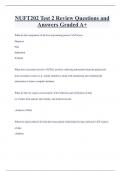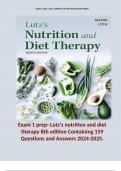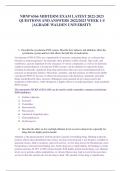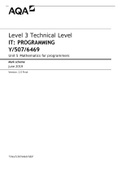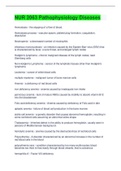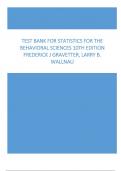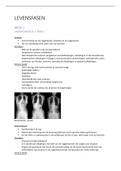Exam (elaborations)
NUR 2349 PN1 Exam 3 QUESTIONS AND ANSWERS CORRECTLY VERIFIED UPDATE (2023/2024)100% ASSURED SUCCESS (GRADED A+)
- Course
- Institution
NUR 2349 PN1 Exam 3 QUESTIONS AND ANSWERS CORRECTLY VERIFIED UPDATE 2023/2024100% ASSURED SUCCESS (GRADED A+) 1.) Which client is at highest risk of compromised immunity? A. Client who just had surgery B. Client with extreme anxiety C. Client who is awaiting surgery D. Client who just delivere...
[Show more]




